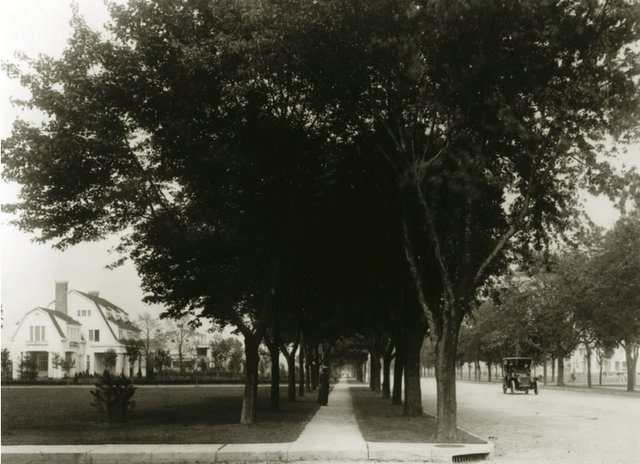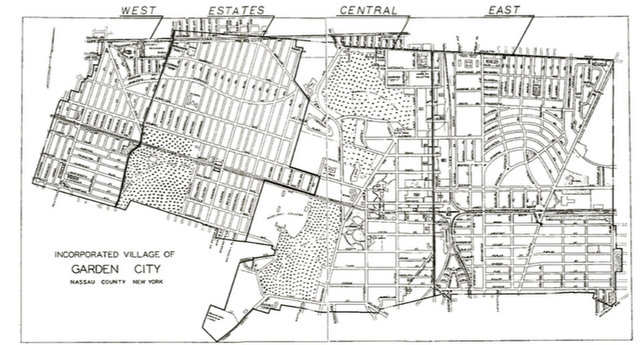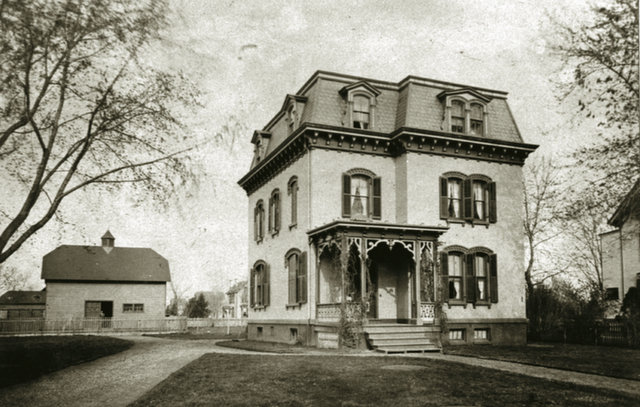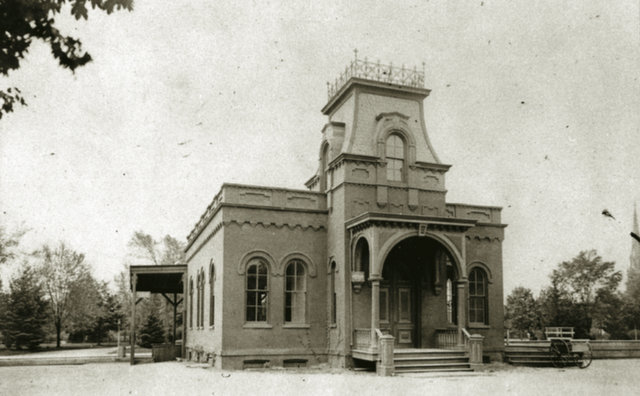5. Garden City
 Timothy Woodruff house on Stewart Avenue, ca.1908. Village of Garden City, NY, Archives Collection
Timothy Woodruff house on Stewart Avenue, ca.1908. Village of Garden City, NY, Archives Collection
Few communities capture the charm and long lasting endearment of Long Island’s early planned communities like Nassau County’s Garden City. Founded by department store tycoon A.T. Stewart in 1869, the City evolved from its first master plan in 1870 through the 1920s. Early praise of the community focused on the urban design, including the 45,000 trees that lined the city’s roads and architecture stylings of the grand homes within the area. Soon, Garden City was compared to the “Eden of Long Island.”

Stewart, and his friend John Kellum, a local Hempstead-raised architect, set out to plan a new community from the ground up on the 7,170 acres purchased from the Town of Hempstead for $394,350. The site was ideal for Stewart’s vision, fitting his criteria of being located within 12 miles of New York City. The project drew immediate attention, with Harpers Weekly stating “Hempstead Plains, hitherto a desert, will be made to blossom as the rose.”
 Brick Disciple house, ca.1875, John Kellum, architect. Village of Garden City, NY, Archives Collection
Brick Disciple house, ca.1875, John Kellum, architect. Village of Garden City, NY, Archives Collection
The city continued to evolve and adapt to the changing visions of the American ideal – from space that emulated the grand garden cities that dot the English countryside, to a religious center of learning and spirituality, to a place that showcased the excessive wealth and prosperity American industry provided at the height of the 1920s.
 Garden City’s first railroad station and post office, ca. 1873. Village of Garden City, NY, Archives Collection
Garden City’s first railroad station and post office, ca. 1873. Village of Garden City, NY, Archives Collection
For a time, Garden City’s identity was as fleeting as the ever-shifting American ideal of utopia – and few areas of Long Island encapsulated the quick evolution of the concept as A.T. Stewart’s vision. Today, the City remains one of the most unique areas in the region – and like it’s history suggests, is always evolving.
From struggles over how to preserve its historic identity, to how to retool itself for the challenges presented by 21st century living, Garden City encapsulates Long Island as a whole. How does suburbia evolve itself to remain relevant to the times, all while paying homage to the area’s heritage and serving the needs of its residents?
Conclusion
As a whole, Long Island’s communities, planned, and in so many cases, not planned enough, face this struggle. With environmental constraints, rising costs, declining municipal revenues, aging infrastructure and political divisions, many look back at the areas examined by MacKay in Gardens of Eden: Long Island’s Early Twentieth Century Planned Communities with a whimsical nostalgia.
Today, the story is still the same. Ambitious developers see Long Island’s relative openness, standing in stark contrast with New York City’s density, and see both potential and moneymaking opportunity. In the past, these developers faced little resistance to achieving their goals. Today, residents work to protect their own slice of the suburban ideal that the Nassau/Suffolk region offers.
From Great Neck Estates, Belle Terre, Long Beach, Brightwaters to Garden City, policymakers and the constituents they serve can both learn and apply the lessons learned from these great suburban experiments – one of which is, without a dedicated vision, we all flounder.
Next, check out a very different type of Long Island suburb: a former Nazi Neighborhood and camp.
Rich Murdocco writes on land use and development issues, with his work regularly appearing in Newsday, Long Island Business News, New Geography, and a weekly column for the Long Island Press. He has his BA from Fordham University in both Political Science and Urban Studies, and his MA from SUNY Stony Brook, where he studied regional, environmental and transportation planning with Dr. Lee Koppelman, Long Island’s veteran planner.
You can view his collection of published work at his website, www.TheFoggiestIdea.org, follow him on Twitter @TheFoggiestIdea, and LIKE The Foggiest Idea on Facebook.
He is a lifelong Long Islander, and lives in Nassau County with his wife Arielle, and dog, George.





